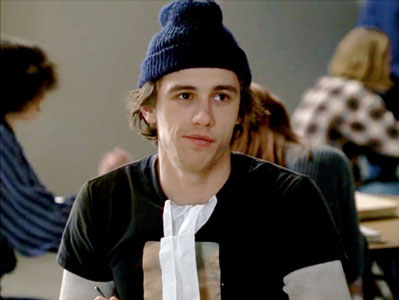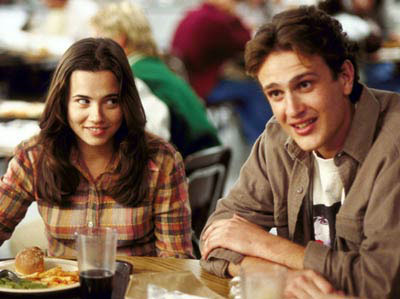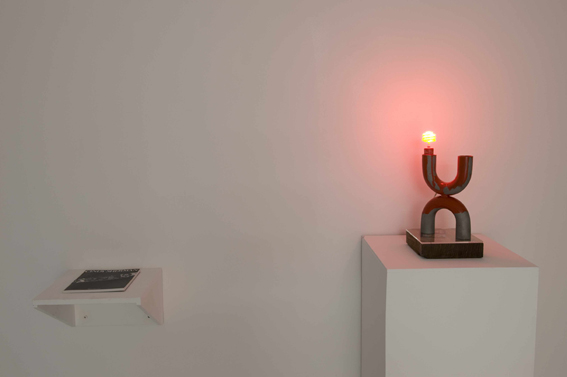Air de Paris, FREAKS AND GEEKS
with Jay Chung and Q Takeki Maeda, Jana Euler, James Franco, James Hoff and Danny Snelson, Aaron Flint Jamison, Tobias Kaspar, Brian Kennon, Nina Könnemann, and Amy Yao.
30 juin – 23 juillet,
opening on Thursday June 30 from 6 to 9 PM

It was 1980, seen from 1999. «Everything you remember from high school that you choose to forget» read the tagline. The first episodes of the TV series Freaks and Geeks that it was possible to download seemed at first watch too elusive: not enough playful situations that could have turned it into a outstanding comedy show, not enough of the typical teenagers and teachers characters whose changing relationships can provide endless twists and turns. But throughout the hesitant rhythm of the first sequences, the awkward looks of the cast, and the blank picture of dullness, bore and dismay, little by little, Judd Apatow and Paul Feig’s Freaks and Geeks revealed a masterpiece.
Seriously. When it comes to teenagers, suspicion is appropriate. Contemporary art, for instance, has been customary for indulging in the image of youth in revolt, in trouble, in ecstasy or in lust, fantasizing kids behaviors, longing for their supposed état de grâce and gazing at their thin bodies. Shame on you, Larry Clark! This kind of fetishistic, nostalgic position fails to address a more specific vision, which was at the heart of Freaks and Geeks: teenage years are the times where one’s relations to power, authority and society are shaping themselves out – not as figures to be taken over or disputed, but as definitive aliens. Contrasting with the glorious picture of youngsters who would quintessentially belong to the world and are eager to possess it, the Bildungsroman we think is relevant here is one that tells stories of frustrations and enthusiasm, interdictions and inventions, anxieties and lunch boxes. The freaks and the geeks know this world is not theirs – and they don’t want it, because it’s just boring. It sucks.
Gathering prosaic objects, tokens, language-based works and a few films, songs and paintings, the exhibition «Freaks and Geeks» takes its inspiration from the art of the teenage movie, one that has been too often overlooked by contemporary art. As echoes of the ethics of the anti-heroes and losers within the genre, the artists’ works in the show focus on the contradictions of self-fulfillment, friendship and love. They don’t call for subversion and transgression, but care about the soft dullness of growing up and leaving one world for another. They recall the ups and downs of adolescence, when fantasies start to have consequences, and when the biggest decisions are taken without being conscious that they are that big. But at least, freaks and geeks learned one thing from their parents: in one way or another, things will work themselves out.
castillo/corrales is is an alternative art space, initiated early 2007 in Belleville (Paris), collectively run by a group of artists, curators and writers in Paris, from a generation who got the shaft but can still keep everything from sucking.
****************

Au départ, on n’était pas tout à fait convaincu. Les premiers épisodes, péniblement téléchargés à l’époque sur les recommandations d’un ou d’une amie, laissaient un sentiment d’inachevé. Pas assez drôle pour un comedy show, et les situations et les personnages ne cadraient non plus avec les codes des séries «pour ados» que l’on avait pris l’habitude de regarder au second degré. Pourtant, au fil des épisodes, on s’attachait aux hésitations, aux embarras et aux élans de Lindsay et Sam Weir, de Daniel Desario, Kim Kelly, Nick Andopolis, et tout ce que l’on aurait préféré oublier de la période du lycée ressurgissait. Peu à peu, Freaks and Geeks, la série TV produite par Judd Apatow et Paul Feig, s’est avérée un chef-d’œuvre.
Sans rire. L’adolescence, sujet rebattu en art comme au cinéma, sert souvent de prétexte commode à des divagations plus ou moins complaisantes sur l’esprit de transgression, la révolte, le trouble éthéré et le désir extatique qui caractériseraient « la» jeunesse. Figure imposée, façon Larry Clark : des corps imberbes et graciles, empreints d’une torpeur mystique, même depuis le fond de l’abîme. Un mirage rédempteur qui n’invite pas à développer une vision plus complexe. C’est là précisément l’enjeu de Freaks & Geeks : décrire l’adolescence, non comme un état transcendantal, mais comme le moment où l’on commence à tirer au clair les relations de pouvoir et d’autorité qui structurent la société – tout en ayant le sentiment confus que ce monde que l’on nous promet nous est définitivement étranger. À rebours des images idéalisées de teenagers fiers d’en être et avides de conquêtes, le roman d’apprentissage qui nous intéresse ici parle de frustration, d’interdits, de maladresse, mais aussi d’enthousiasme, d’inventivité et de bière sans alcool. Les freaks et les geekssavent que le monde ne leur appartient pas – d’ailleurs, ils n’en veulent pas. Parce qu’il craint.
Trouvant son inspiration dans le genre méconnu (du moins dans l’art contemporain) du teen movie, l’exposition «Freaks and Geeks» rassemble des objets quotidiens, quelques emblèmes et allégories, des films, des peintures. Des œuvres qui renvoient aux antihéros et aux losers qui ont fait le prix du genre, trouvant leur épanouissement dans les contradictions même de l’amitié, de l’amour et de l’immaturité. Leur moteur n’est pas tant la subversion et la volonté de puissance, que le sentiment d’indifférence qui accompagne le passage d’un monde à l’autre, et l’entrée dans l’âge adulte. Elles rappellent les hauts et les bas dont l’adolescence est faite, alors que les décisions les plus importantes sont prises sans même avoir conscience qu’elle le sont vraiment, que les rêves commencent à avoir des conséquences, et que l’on réalise que l’on n’a rien appris de ses parents. Sauf peut-être que, d’une manière ou d’une autre, tout finit toujours par s’arranger.
castillo/corrales est un espace d’exposition indépendant créé en 2007 à Belleville (Paris) par un groupe d’artistes, de critiques et de commissaires d’exposition bien dans leurs jeans.

